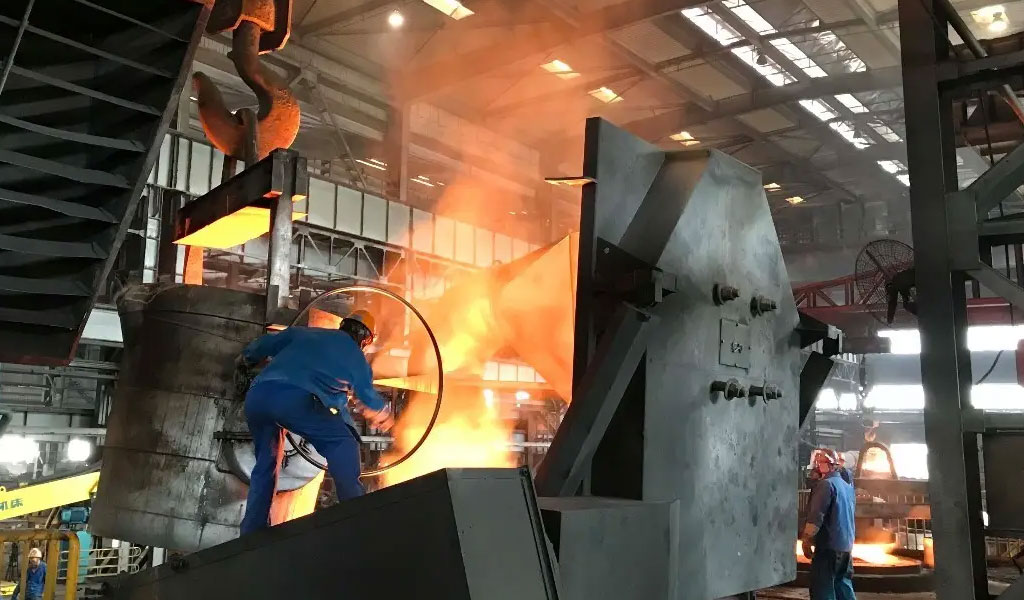
Secondary Process After CNC Machining Heat Treatment
Heat Treatment Before Or After CNC Machining?
Heat treatment is the first operation to consider after cnc machining, and it is even possible to consider machining pre-treated materials. Why use one method and not the other? The order in which the heat treatment and machining metals are selected can affect the material properties, machining process, and tolerances of the part. When you use materials that have been heat treated, this affects your machining – harder materials take longer to machine and tools wear faster, which increases machining costs. Depending on the type of heat treatment applied and the depth below the affected surface of the material, it is also possible to cut through the hardened layer of the material and defeat the purpose of using hardened metal in the first place. It is also possible that the machining process generates enough heat to increase the hardness of the workpiece. Certain materials, such as stainless steel, are more prone to work hardening during machining, and extra care is required to prevent this. However, choosing a preheated metal does have some advantages. With hardened metals, your parts can be held to tighter tolerances, and sourcing materials is easier because preheat-treated metals are readily available. And, if you wait until after machining is complete, heat treatment adds another time-consuming step to the production process. On the other hand, heat treatment after machining gives you more control over the machining process. There are many types of heat treatment, and you can choose which type to use to obtain the desired material properties. Heat treatment after machining also ensures consistent heat treatment on the surface of the part. For preheated materials, the heat treatment may only affect the material to a certain depth, so machining may remove hardened material in some places but not others. As mentioned earlier, post-processing heat treatment increases cost and lead time because the process requires additional outsourced steps. Heat treatment can also cause parts to warp or deform, affecting the tight tolerances obtained during machining.Heat Treatment
Typically, heat treatment changes the material properties of the metal. Usually, this means increasing the strength and hardness of the metal so that it can withstand more extreme applications. However, certain heat treatment processes, such as annealing, can actually reduce the hardness of the metal. Let’s look at the different heat treatment methods.Hardening
Hardening is used to make metal harder. Higher hardness means the metal is less likely to dent or mark when impacted. Heat treatment also increases the tensile strength of the metal, which is the force by which the material fails and breaks. Higher strength makes the material more suitable for certain applications. To harden a metal, the workpiece is heated to a specific temperature above the critical temperature of the metal, or the point at which its crystal structure and physical properties change. The metal is held at this temperature and then quenched in water, brine or oil to cool. The quenching fluid depends on the specific alloy of the metal. Each quench fluid has a unique cooling rate, so the choice is based on how fast it cools the metal.Case Hardening
Case hardening is a type of hardening that affects only the outer surface of the material. This process is usually done after machining to create a durable outer layer.Precipitation Hardening
Precipitation hardening is a process for specific metals with specific alloying elements. These elements include copper machining, aluminum machining, phosphorus and titanium. These elements precipitate in the solid metal or form solid particles when the material is heated for an extended period of time. This affects the grain structure, increasing the strength of the material.Annealing
As mentioned earlier, annealing is used to soften the metal, as well as to relieve stress and increase the ductility of the material. This process makes the metal easier to work. To anneal a metal, the metal is slowly heated to a specific temperature (above the material’s critical temperature), held at that temperature, and finally cooled very slowly. This slow cooling process is accomplished by burying the metal in insulating material or keeping it in the furnace as the furnace and metal cool.Large Slab Machining Stress Relief
Stress relief is similar to annealing, where the material is heated to a certain temperature and cooled slowly. However, in the case of stress relief, this temperature is below the critical temperature. The material is then air cooled. This process removes stress from cold working or shearing without significantly altering the physical properties of the metal. While the physical properties do not change, relieving this stress helps avoid dimensional changes (or warping or other deformation) during further processing or during use of the part.Tempered
When a metal is tempered, it is heated to a point below the critical temperature and then cooled in air. This is almost the same as stress relief, but the final temperature is not as high as stress relief. Tempering increases toughness while retaining most of the hardness of the material added through the hardening process.Final Thoughts
Heat treatment of metals is often necessary to achieve the desired physical properties for a specific application. While heat treating the material prior to milling can save overall production time, it adds time and cost to the machining process. At the same time, machined heat-treated parts make machining the material easier, but add an extra step to the production process.Be-cu aluminum machining china prototype company service include : aluminum cnc turning, aluminum milling service, aluminum extrusions, 5 axis machining aluminum, swiss machining aluminum, aluminum guide,aluminum products